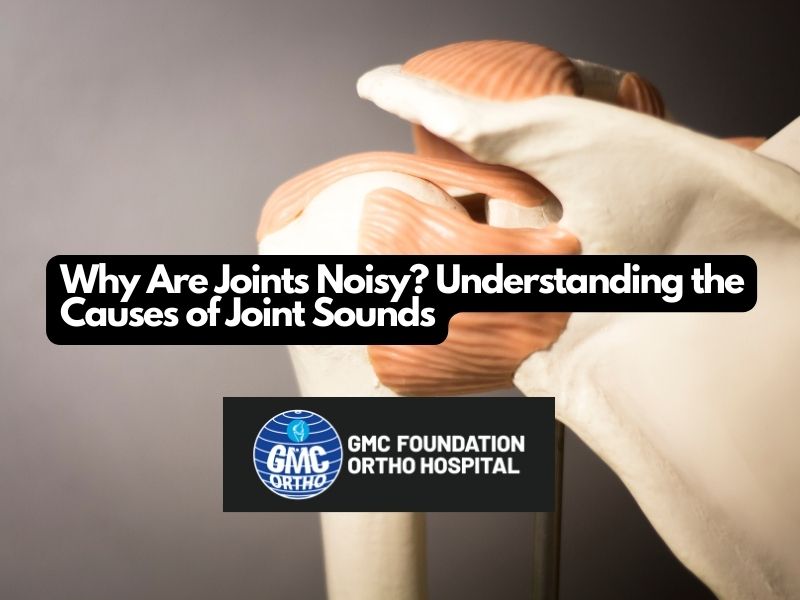9633789014

East Nadakkave, Kozhikode, 673011 9633789014
Book an Appointment
Note: This is an appointment request only Depending on the availability of the consultant, appointment will be confirmed to you through mail/call The appointment requests can be made minimum 48 hrs in advance

Why Are Joints Noisy? Understanding the Causes of Joint Sounds
June 10, 2024Many people experience joint sounds, such as popping, cracking, or clicking, during everyday activities or specific movements. These noises can be concerning, but they are often harmless. Understanding why joints make these sounds can help alleviate worry and provide insight into when it might be necessary to seek medical attention.
Common Causes of Joint Noises
1. Cavitation
Cavitation is the most common cause of joint sounds, especially in the knuckles, knees, and spine. It involves the formation and collapse of small gas bubbles in the synovial fluid, the lubricating fluid within joints. When you stretch or move a joint, the pressure within the joint capsule changes, causing these bubbles to form and then pop, resulting in a cracking or popping sound.2. Ligament and Tendon Movement
Ligaments and tendons can make noises when they move over bones or other structures within the joint. This is especially common in the knees, shoulders, and ankles. When a tendon or ligament snaps over a bony prominence or other tissue, it can create a clicking or snapping sound.3. Rough Joint Surfaces
As people age, the cartilage that cushions the joints can wear down, leading to rough joint surfaces. This condition, known as osteoarthritis, can cause the bones to rub against each other, producing a grinding or creaking sound, often referred to as crepitus. This type of noise is more common in weight-bearing joints like the knees and hips.4. Synovial Plica Syndrome
Synovial plica are folds in the synovial membrane, which lines the joint. These folds can become inflamed or thickened, leading to a snapping or clicking sensation and sound, particularly in the knee joint. This condition is known as synovial plica syndrome.5. Dislocations and Subluxations
When a joint partially dislocates (subluxates) or fully dislocates, it can produce a loud popping or snapping sound. This is often accompanied by pain and a visible change in joint alignment. Dislocations require immediate medical attention.When to Seek Medical Attention
While most joint noises are harmless, certain situations warrant medical evaluation:- Persistent Pain:
- If joint noises are accompanied by pain, swelling, or stiffness, it could indicate an underlying issue such as arthritis, tendonitis, or a ligament injury.
- Joint Instability:
- If you experience a sensation of the joint giving way or feeling unstable along with noises, it may suggest a ligament tear or other structural problem.
- Swelling and Inflammation:
- Persistent swelling, redness, and warmth in the joint along with noises could indicate an inflammatory condition such as bursitis or an infection.
- Limited Range of Motion:
- If joint noises are associated with a reduced ability to move the joint fully, it might indicate a mechanical issue within the joint that needs medical attention.
Tips for Maintaining Healthy Joints
To minimize joint noises and maintain overall joint health, consider the following tips:- Stay Active:
- Regular exercise helps maintain joint flexibility and strength. Focus on low-impact activities like walking, swimming, or cycling to reduce stress on the joints.
- Maintain a Healthy Weight:
- Excess body weight puts additional stress on weight-bearing joints, such as the knees and hips. Maintaining a healthy weight can reduce the risk of joint problems.
- Strengthen Muscles:
- Strong muscles around the joints provide better support and stability. Incorporate strength training exercises into your routine to enhance muscle strength.
- Use Proper Techniques:
- Ensure you use proper form and techniques during physical activities and exercise to avoid undue stress on your joints.
- Stay Hydrated:
- Adequate hydration helps maintain the lubrication of joints and supports overall joint health.
